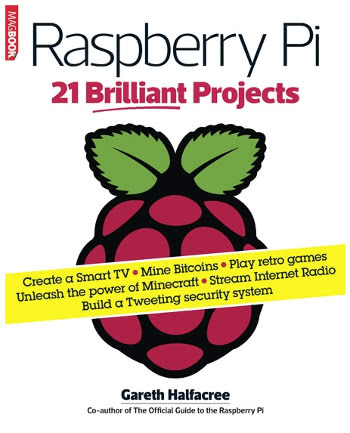
The special blends nicely into Hobby Tech itself: a two-page review of the Raspberry Pi 2 straddles the two features, leading in to a two-page round-up of the best operating systems available for the Pi – along with a preview of Windows 10, coming to the platform in the summer. Four pages of tutorials then follow: turning the Raspberry Pi 2 into a media streamer, a Windows- and Mac-compatible file server, and getting started with Canonical’s new Snappy Ubuntu Core and its innovative packaging system.
The next page walks the reader through a series of tips-and-tricks to help squeeze the most from the £30 marvel: overclocking the new quad-core Broadcom BCM2836 processor, built specifically for the Raspberry Pi 2 and offering a significant improvement over the single-core original BCM2835; expanding the capabilities of the Pi’s general-purpose input-output (GPIO) header; setting up a multi-boot platform to try out different operating systems; and updating the firmware and kernel modules to the very latest revisions using rpi-update.
Finally, the feature finishes with a single-page round-up of the best and brightest rivals to the Raspberry Pi’s crown: Lemaker’s Banana Pro, a dual-core Pi-compatible device with impressive operating system options; the SolidRun HummingBoard, a computer-on-module (CoM) design which promises future upgrade potential; the CubieTech Cubieboard 4, which packs an octa-core processor; the low-cost Hardkernel Odroid C1, the only entry in the list I haven’t personally tested; and the Imagination Technology Creator CI20, which bucks the trend by packing a MIPS-architecture processor in place of the more common ARM chips.
The remaining three pages of my regular Hobby Tech column – which celebrates its second birthday with this issue – feature an interview with local game devs Kriss and shi of Wetgenes regarding their clever Deluxe Paint-inspired pixel-art editor Swanky Paint and a review of Intel’s diminutive Atom- and Quark-powered Edison development platform.
All this, plus a smaller-than-usual amount of stuff written by people who aren’t me, can be yours from a newsagent, supermarket, via subscription or digitally via Zinio and similar services.



